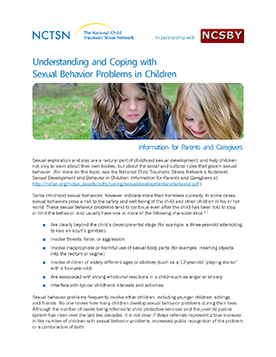
Understanding and Coping with Sexual Behavior Problems in Children: Information for Parents and...
Provides parents and caregivers with information about coping with sexual behavior problems.
The following resources on child trauma were developed by the NCTSN. To find a specific topic or resource, enter keywords in the search box, or filter by resource type, trauma type, language, or audience.

Provides parents and caregivers with information about coping with sexual behavior problems.
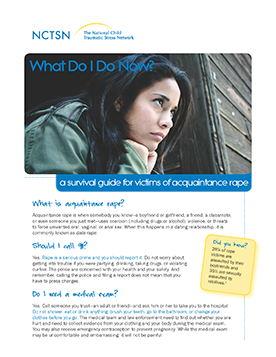
Offers survivors of acquaintance rape information on what they can do now.

Provides parents and caregivers with information about a child disclosing sexual abuse.

Brinda a los padres y cuidadores las herramientas necesarias para apoyar a los niños que han sido víctimas de abuso sexual.
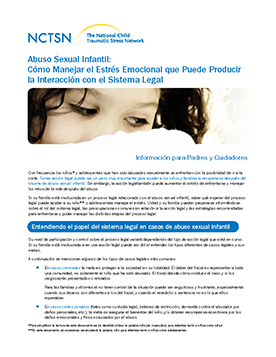
Ofrece información a padres y cuidadores sobre el abuso sexual infantil, y sobre cómo afrontar el estrés emocional que implica la interacción con el sistema legal.
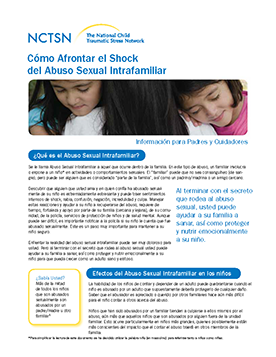
Define lo que es el abuso sexual intrafamiliar y los efectos que tiene en el niño y otros miembros de la familia. También, brinda información a los padres para ayudarlos a manejar sus propias reacciones ante el abuso.
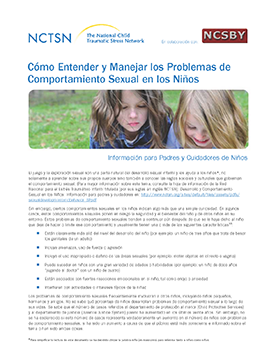
Describe las características y las causas de los problemas de comportamiento sexual.
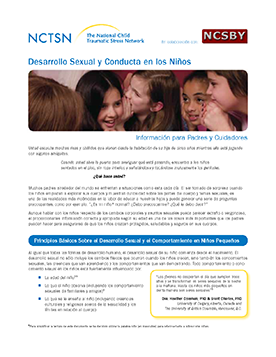
Describe los comportamientos sexuales comunes en la infancia, proporciona información sobre cómo responder a estos comportamientos sexuales, y brinda sugerencias de cómo educar a los niños sobre cuestiones sexuales.
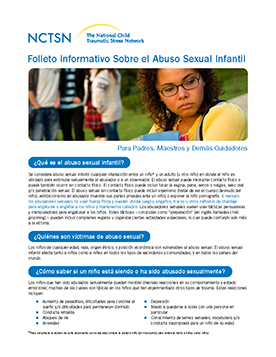
Define y responde las preguntas más frecuentes sobre el abuso sexual infantil. También, describe mitos y realidades sobre el abuso sexual infantil y brinda consejos para ayudar a proteger a los niños.
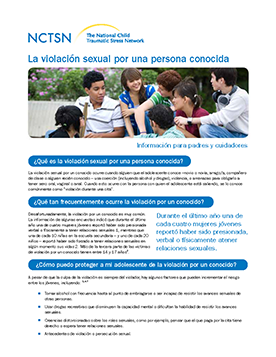
Define lo que es la violación por una persona conocida, aborda la frecuencia con que ocurre, y ofrece sugerencias a los padres de cómo pueden proteger a sus hijos de esta situación.

Provides parents and professionals with the answers to commonly asked questions about the impact of child sexual abuse.
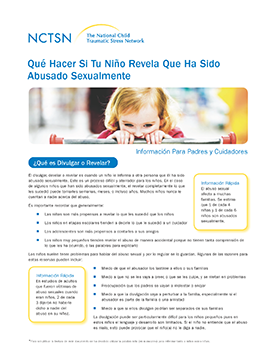
Proporciona información a padres y cuidadores sobre cuando un niño revela un abuso sexual.